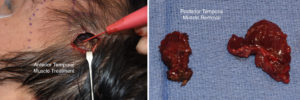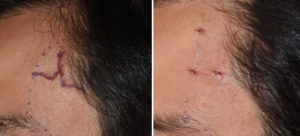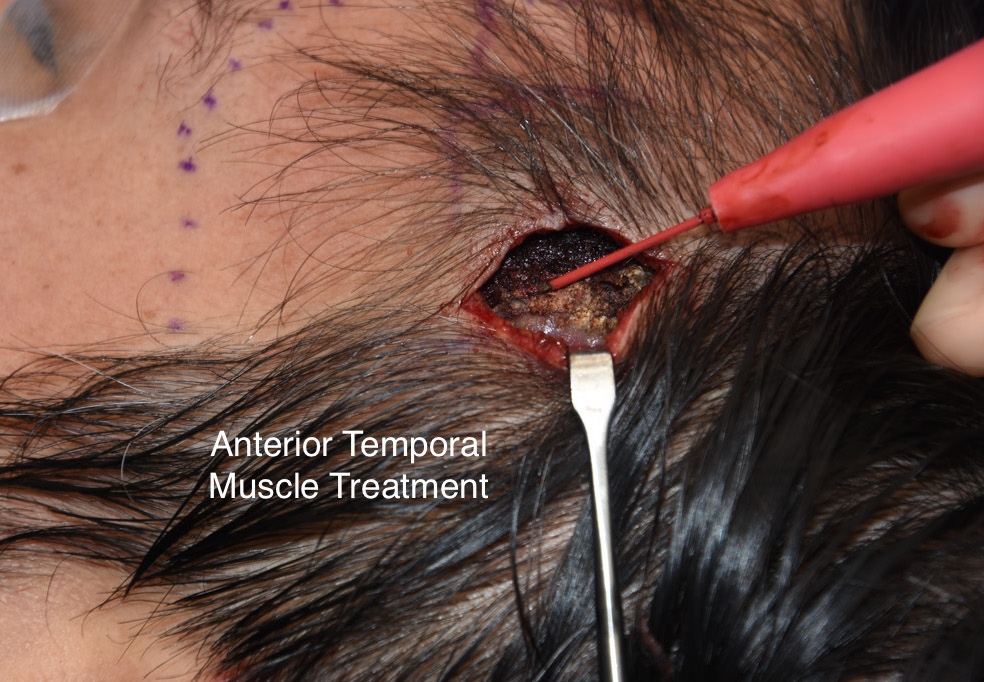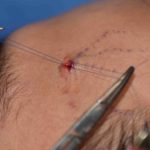Background: The temporal region, seen externally as the side of one’s head, extends from the side of the eye to the back of the head. The ear lies approximately in the middle of this area and is the only non-smooth topographic feature of the temporal region. It is composed primarily of the temporalis muscle which is thicker in the front half (anterior temporal) than the back half. (posterior temporal) The only bony contribution to its width is in the posterior temporal area where the temporal-parietal bone is convex unlike the very concave anterior temporal fossa.
Reduction of the wide head is most commonly treated by complete posterior temporal muscle removal through a postauricular incision. This produces a dramatic change in the side of the head, changing it from a convex frontal profile to a straight line. This does not, however, affect the anterior region which is half non-hair bearing and half hair-bearing scalp coverage.
Reduction of the anterior temporal region can not be done by a total myectomy approach since the muscle is very thick and such removal would result in an unaesthetic effect. Sitting next to the bony lateral orbit and the anterior temporal line of the forehead, such a dramatic hollowing effect would create an unnatural skeletonized appearance. As a result a subtotal myectomy approach is needed. Rather than trying to cut sections of the muscle out, a more controlled reduction is done using heat to create a more gradual and uniform shrinking of the muscle which occurs postoperatively over time.
Besides changing the shape of the side of the head through muscle manipulation, another aesthetic treatment for the anterior temporal region is the treatment of prominent arteries. Such vessel prominences, which almost exclusively appear in men, are the result of enlargement of the anterior branch of the superficial temporal artery. Typically appearing as multiple serpiginous ‘worms’ crossing into the forehead, they are treated by ligation at multiple branch points.
Case Study: This young female was bothered by the fullness or width to the entire side of his head as well as prominent temporal arteries. A comprehensive surgery was planned to treat his total aesthetic temporal concerns.


Treating both the anterior and posterior muscle as well as the prominent arteries at the same time constitutes a complete approach to the aesthetic treatment of prominent temporal features through multiple soft tissue reductions.
Case Highlights:
1) Total temporal reduction refers to lessening the width of both the anterior and temporal muscle compartments.
2) While posterior temporal reduction is done by a complete myectomy, the anterior temporal region is treated by a subtotal electrocautery reduction technique.
3) Prominent temporal arteries are reduced/eliminated by a multi-level ligation technique.
Dr. Barry Eppley
Indianapolis, Indiana




